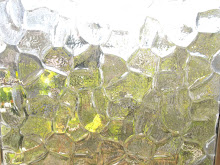Desolation Peak Fire Lookout
 Desolation Peak, North Cascades National Park
Desolation Peak, North Cascades National Park
Whatcom County, Washington
Few places on Earth are more poetic and awe-inspiring than the top of a mountain. The fire lookout stations in the North Cascades have a rich history of attracting writers seeking the time and space to turn inward for the season. Gary Snyder, Philip Whalen, and, most famously, Jack Kerouac all spent time serving as fire lookouts in the Cascades. At 6102 feet2, Desolation Peak isn't the tallest or most impressive peak in the Cascade Range, but its humble fire lookout may be the only one with a novel to its name.The Desolation Peak Fire Lookout was built in 1932 by the United States Forest Service. The fire lookouts were manned seasonally from July through September and boarded up the rest of the year. Traditionally a single man would go up at the start of the season and come down 3 months later - although in later years the lookouts were rotated in shifts of several weeks at a time. The Desolation Peak lookout was home to its most celebrated fire lookout (a term that applies to both the person and the structure) in the summer of 1956 when Beat writer Jack Kerouac worked atop Desolation Peak, inspiring the novel Desolation Angels.
The lookout itself is a simple 14' 6" by 14' 6" wood box. It has a peaked roof with a conventional pitch clad in cedar shakes. The structure has no foundation, sitting several several feet above a rocky outcropping on concrete blocks. The most distinctive feature of the lookout is that it has 4 walls of windows looking out in every direction. The windows are protected by wood flaps that are propped up during the season and battened down for the winter. These flaps are visually compelling, suggesting that the building itself is shading its view in order to scan the horizon (of course, they provide shade for the occupant as well). The last distinctive feature is a small lightning rod that protrudes from the peak of the roof, protecting the inhabitant in this highly exposed location.
Left: Interior, Desolation Peak Lookout.
Center: Shuttered for winter.
Right: Man operating Osbourne Fire Finder.
The lookouts (building) were originally established to provide advanced warning of potential forest fires due to lightning strikes or other means. The lookouts (human) were well versed in the surrounding geography, equipped with an Osbourne Fire Finder, and armed with radio equipment to report suspect fires. During waking hours, lookouts were expected to spend 20 minutes out of every hour visually scanning the horizon for smoke or other signs of a fire. The most important function of the building, then, was to facilitate this constant, uninterrupted surveillance. The solution was to create what was essentially a glass box - at least at eye level. While the tops of mountains are very beautiful in the summer, they are punishing places in the winter. These frail man-made structures were expected to weather 9 months of the year unoccupied, resisting snowfall in excess of 100” deep - and be ready for fire season come July. They had to sustain a single inhabitant, with a small wood stove for heating and cooking, a rope mattress bed, a latrine, and enough space to keep from going stir crazy. The resulting design is an intriguing study in extremes: very open, and then very closed.
The form and materials of the lookout station were shaped as much by its remote location as the extremes in weather it withstood. Even today, the trip to Desolation Peak requires a ferry ride up Ross Lake to the Lightning Creek Trailhead, followed by a 4,400 foot climb over 5 miles to reach the peak. All building materials and supplies would have been brought in by pack mule. The wood stove would have been brought up in pieces, and the concrete blocks would have been a challenge, but the rest of the construction is a readily-available, lightweight wood frame and cladding - likely milled from the very forests the lookout watched over. These simple, functional constraints and vernacular wood construction give the lookout a humble disposition. Without even a solid connection to the rock upon which it stands, the lookout feels temporary, fleeting, a reminder of man's insignificance in the face of the mountains.
The Desolation Peak Fire Lookout is a humble building that defers to its context. It stands on a site uninhabitable for 9 months of the year, exposed to extremes of cold, wind, and snow without heat or maintenance. The form of the structure is shaped by the paradoxical requirement that it be able to be both totally open and completely closed. The fire lookout at Desolation Peak is no longer in use as a working building. As our approach to forest fire suppression has changed, so have our systems of monitoring them. The lookout station still stands, however, a sort of spiritual mecca and a destination for hikers and literary tourists. The fragility of the structure accentuates the poetry of the place. It is a human-scaled object, precariously balanced among giants, reminding us that no matter how advanced we become, there will always be forces in the world beyond our ability to control.





